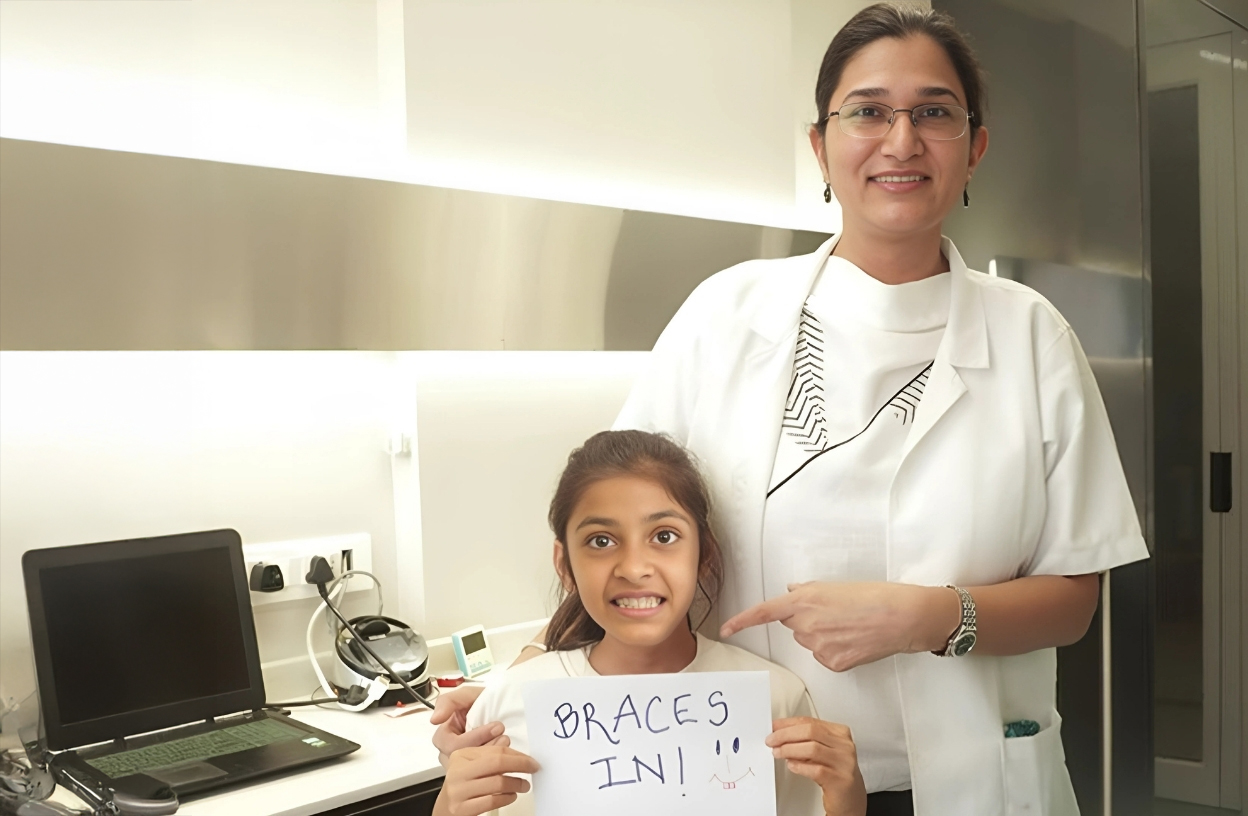Children’s orthodontic treatments usually last between 12 to 18 months, though this can vary depending on case complexity. Mild to moderate spacing or crowding may resolve sooner, while cases involving extractions or severe bite issues may take longer. Regular check-ups every 4 to 5 weeks are essential for progress monitoring
Early intervention, also referred to as Phase 1 therapy, is advised in some situations. This often lasts for six to eight months and happens between the ages of seven and ten. The objective is to direct the growth of the jaw, provide room for arriving teeth and avoid more serious issues down the road. Phase 2 therapy may start once all permanent teeth erupt, which typically happens between the ages of 11 and 13. When most people hear the phrase “braces,” they picture straightening teeth, adjusting the bite and making the smile flawless.
When Do Braces Take Place?
Children’s orthodontic treatments typically last 12 to 18 months, however this might vary based on the case’s intricacy. Mild to moderate spacing or crowding could go away faster. It can take longer for patients requiring extractions or severe biting problems. Check-ups are necessary on a regular basis, usually every 4 to 5 weeks
Why Would a Kid Require Braces?
Braces are used for much more than just straightening teeth. They are essential for enhancing face growth, general oral health, and even daily comfort. A youngster may benefit from orthodontic treatment for the following main reasons:
Confidence and appearance
Children’s perceptions of their looks might be impacted by packed, bent or extending teeth. A confident smile may have a significant influence on self-esteem, especially during those difficult years of growing up, even though aesthetics isn’t the only reason for braces
- Problems with Biting
An open bite, crossbite, underbite, or overbite can all result in improper tooth alignment, which can lead to uneven tooth wear, jaw pain and chewing difficulty. In order for the upper and lower teeth to function effectively together, braces aid to straighten the bite
- Troubles in Speaking
Misaligned jaws or teeth can occasionally hinder the development of speech. Braces can assist in correcting misaligned teeth
What Kinds of Children's Braces Are Available?
- Metal Braces
- Ceramic Braces
- Invisible Aligners
By the age of seven, children should have had their first orthodontic assessment. Since several permanent teeth have often erupted by this point, the orthodontist can identify minor problems with dental alignment or jaw development before they become more serious
Final Verdict
Children are very sensitive to your mood and energy, so try to stay calm and upbeat—even if you’re feeling nervous about the visit. If you’ve had negative dental experiences yourself, do your best not to share those stories. Instead, focus on making this a fun, normal part of keeping healthy—just like visiting the pediatrician or brushing their teeth at home. Your positive attitude can help your child build a lifelong sense of confidence about dental care


